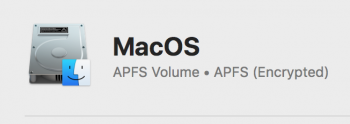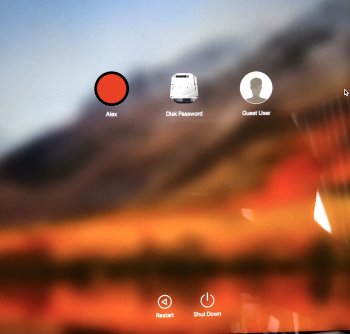I've installed Mac OS X High Sierra 10.13.4 on my MacBook Pro from the USB flash.
While I installed the OS I chose APFS Encrypted file system on my entire SSD.
Now I have my disk Encrypted (1.png)

and my FileVault was Enabled automatically after installation (2.png)

Now when I reboot the MacBook I have two option to logon: (3.jpg)

1) My User account "Alex":
When I type the password for myself user I just login as usual.
2) Second "Disk password":
When I choose "Disk password" I type the password that I chose for Disk encryption.
After 30 sec downloading that option of Disk password just despair and I have just one option (1) "Alex" >
I just put password for my account and login.
There is no differences how did I logged in.
The question is what the difference between these two login option?
Also why am I actually able to login without entering disk password (1 option).
Thanks.
While I installed the OS I chose APFS Encrypted file system on my entire SSD.
Now I have my disk Encrypted (1.png)

and my FileVault was Enabled automatically after installation (2.png)

Now when I reboot the MacBook I have two option to logon: (3.jpg)

1) My User account "Alex":
When I type the password for myself user I just login as usual.
2) Second "Disk password":
When I choose "Disk password" I type the password that I chose for Disk encryption.
After 30 sec downloading that option of Disk password just despair and I have just one option (1) "Alex" >
I just put password for my account and login.
There is no differences how did I logged in.
The question is what the difference between these two login option?
Also why am I actually able to login without entering disk password (1 option).
Thanks.

